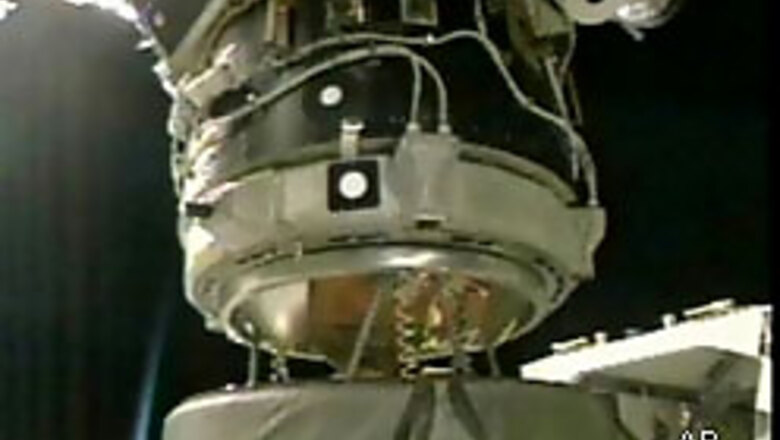
views
Cape Canaveral (Florida): Space shuttle Atlantis docked with the international space station on Monday, arriving with the first addition to the orbiting space lab in more than three and a half years.
Atlantis commander Brent Jett eased the space shuttle into the space station's docking port where latches automatically fastened the two spacecraft together at 6:48 am (EDT).
The nearly two-day trip from Earth ended about 220 miles above the southeastern part of the Pacific Ocean.
"Pretty good," astronaut Jeff Williams radioed Mission Control from inside the space station.
With both vehicles moving at 17,500 miles per hour, the tag-up with the space station required Atlantis to make a series of jet firings that ended with Jett taking manual control of the spacecraft about 1,000 feet from the space station.
At about 600 feet from the station, Jett maneuvered the spacecraft into a 360-degree pitch so that the space station's three-man crew could photograph images of the shuttle's belly and transmit them to NASA engineers, who will look for any damage from liftoff to the spacecraft's thermal skin.
That inspection technique, along with another performed Sunday using a 50-foot boom with sensors at the end, were implemented following the Columbia accident, which killed seven astronauts in 2003.
After reviewing photos from Atlantis's launch on Saturday, NASA managers saw only a single piece of debris that fell during a part of the liftoff when a debris strike can endanger the shuttle.
A thruster cover fell 16 seconds into the ascent at a speed of 230 miles per hour, but it didn't hit the shuttle.
Seven other pieces of foam and ice debris appeared to fall off, including four that seemed to hit the shuttle, but they all occurred too late into the ascent when the debris wasn't moving fast enough to do much damage.
Atlantis was hauling a 17 1/2-ton truss segment, containing two attached solar wings, which will be the first new addition to the space station since December 2002 when space shuttle Endeavour delivered another truss segment.
The Columbia disaster in 2003 halted all construction on the space lab.
NASA and its international partners hope to finish building the space station on 14 additional missions by 2010 when the space shuttle fleet is grounded.
Following welcoming handshakes and hugs between the space shuttle and space station crews, astronauts planned to use the shuttle's robotic arm to remove the $372 million addition from the shuttle's cargo bay and hand it over to the international space station's robotic arm.
Astronauts Joe Tanner and Heidemarie Stefanyshyn-Piper planned to end the day by "camping out" overnight in the space station's airlock in preparation for the first of three spacewalks the next day.
The air pressure in the airlock will be reduced from 14.7 pounds-per-square-inch to 10.2 pounds-per-square-inch.
Before beginning spacewalks, crewmembers usually have to breathe pure oxygen for several hours to purge their bodies of nitrogen and prevent a condition known as the bends.
The new method reduces that preparation time.


















Comments
0 comment